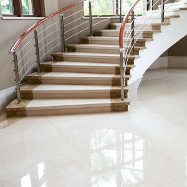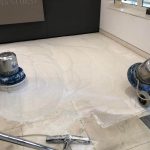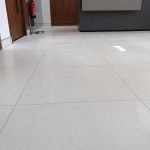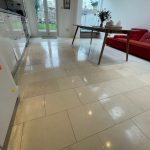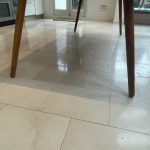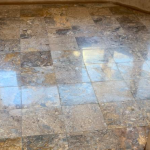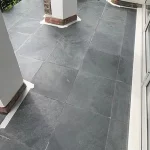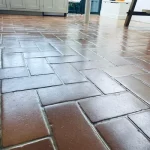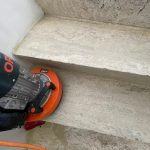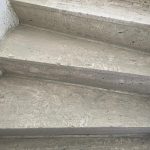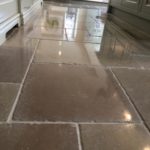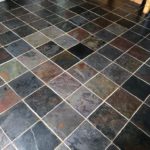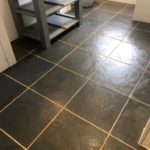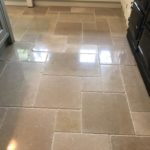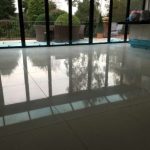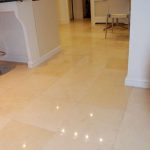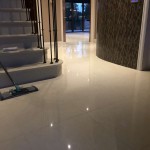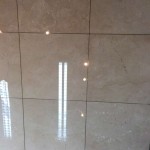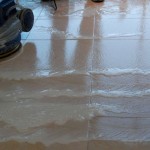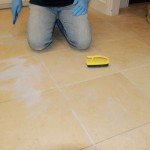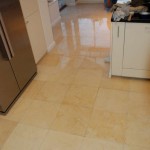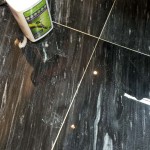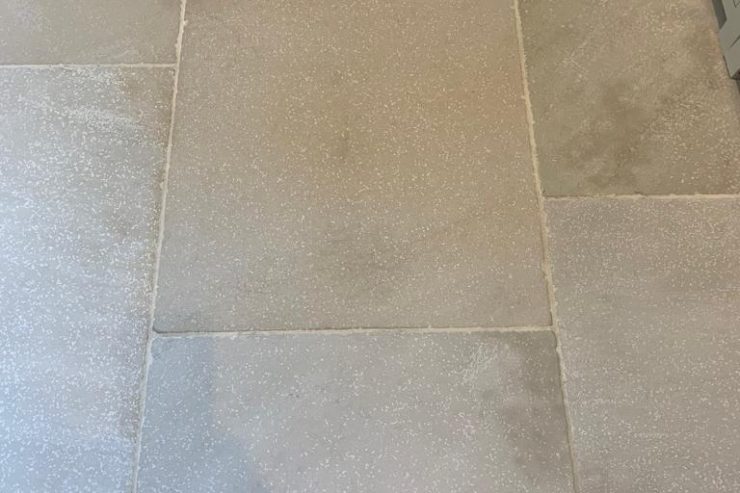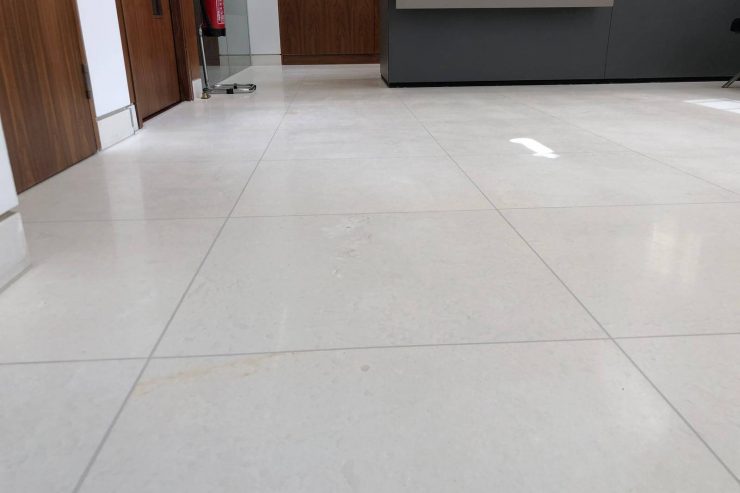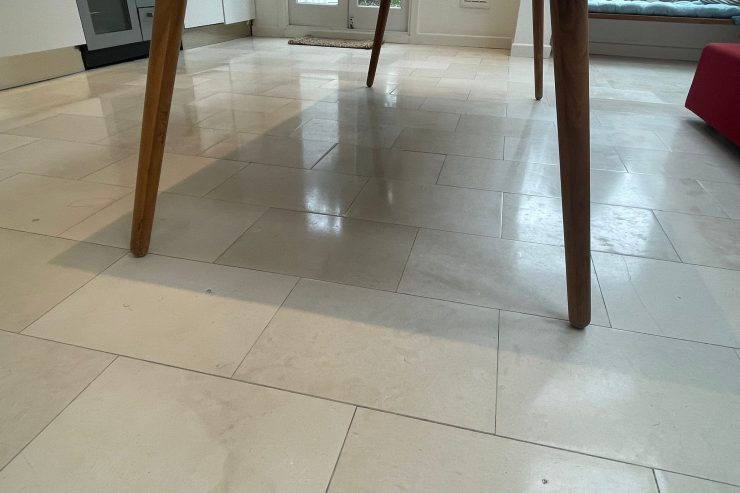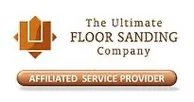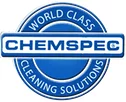Natural Stone Floors Cleaning: How to Expertly Clean Flagstones, Slate, Limestone, and Marble Tiles
Natural Stone Floor, an elegant and durable choice for any home, requires proper care and maintenance to preserve its beauty and longevity. But how do you expertly clean and maintain different types of stone flooring, such as flagstones, slate, limestone, and marble tiles? In this comprehensive guide to stone flooring cleaning, we’ll share essential steps, expert tips, and specific care requirements for various stone flooring types, ensuring your floors remain beautiful and long-lasting for years to come.
Key Takeaways
- Essential steps for cleaning stone floors include surface preparation, using a natural stone cleaner and protective sealant, and proper cleaning techniques.
- Choosing the right cleaning products is essential to preserve the beauty and integrity of various types of flooring such as sandstone, slate, limestone & travertine.
- Expert tips like frequent sweeping/vacuuming with appropriate tools help maintain cleanliness while preventing damage & scratches from furniture pads or door mats.
Essential Steps for Cleaning Natural Stone Floors
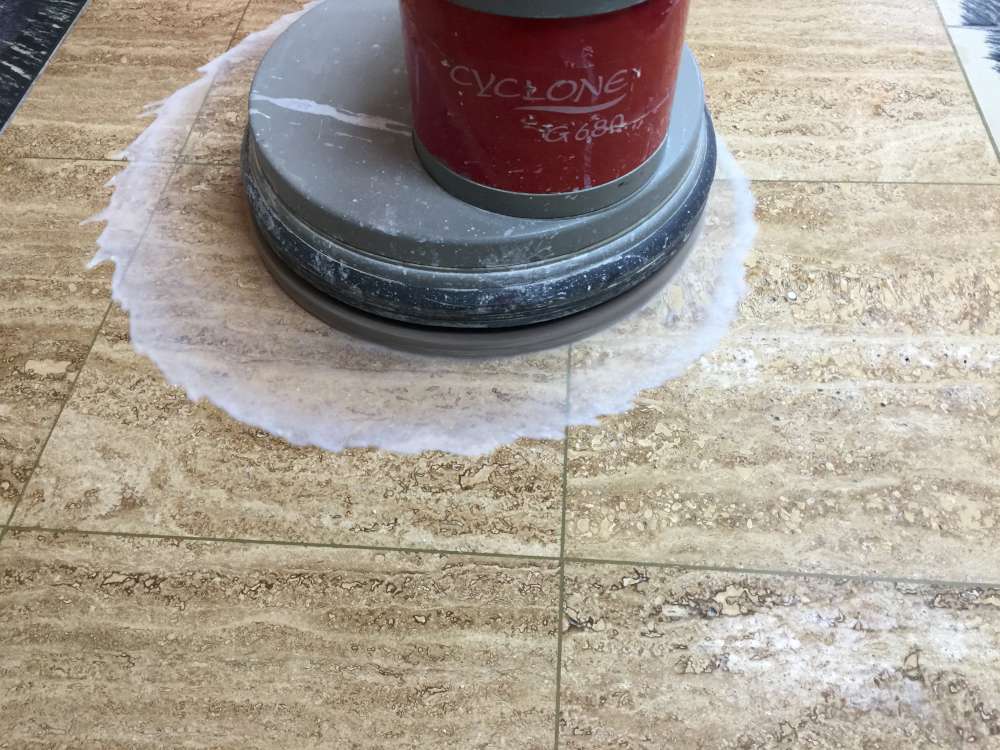
While cleaning stone floors might initially seem intimidating, a few key steps can help maintain your stone flooring’s natural allure with little effort. The initial step involves surface preparation, which requires the removal of loose dust, sand, or grit from the stone floor. This helps prevent scratches and damage to the natural stone surface during the cleaning process.
Subsequently, select a natural stone cleaner specifically designed to be gentle on natural stone surfaces and a protective sealant. Lastly, use proper cleaning techniques, such as using closed-loop cotton string soft mops or microfiber mops, to avoid causing harm to the surface of the stone.
Preparing the Stone Floor
Proper preparation of the stone floor is a necessity before initiating the cleaning process. Here are the steps to follow:
- Use a soft brush or a vacuum with the appropriate hard floor attachment to dry clean the stone surfaces.
- Check your vacuum cleaner regularly to make sure that it is in optimal condition. Additionally, ensure that any worn, rough-edged wheels and attachments are replaced to prevent them from damaging the stone floor.
- Clear loose dust, sand, or grit to prevent potential scratches and damage during the cleaning process.
Next, protect any permanently installed objects, such as furniture, by covering them with a cloth or plastic sheet to prevent dust formation. If needed, perform a deep cleaning on the floor using an appropriate cleaner, such as a stone-specific cleaner, to remove ingrained dirt and stains. After applying the cleaning solution and letting it sit for a minute, use a soft-bristle brush or mop to scrub away any stubborn dirt. Rinse the floor with clean water and allow it to dry completely before continuing with further cleaning or maintenance.
Choosing the Right Cleaning Products
The integrity and appearance of your natural stone floor rely heavily on the selection of appropriate cleaning products. Here are some guidelines to follow:
- Choose a water-based, specialist product that is suitable for both sealed and unsealed stone.
- Opt for a natural stone floor cleaner with a neutral pH level to ensure it does not damage the stone’s surface.
- Avoid using acidic cleaners, as they can harm the stone and the protective sealant.
For oil stains, you can use a paste of acetone and baking soda to gently remove the stain without damaging the stone. For rust marks, a non-acidic rust remover designed for stone floors, such as Floorseal Rust Remover for Stone, is recommended. Employing the correct cleaning products will aid in preserving the floor’s condition and enhancing its longevity.
Proper Cleaning Techniques
Employing appropriate stone cleaners and cleaning techniques is vital in preserving the beauty of your stone floors. Utilize microfiber mops and scrubber pads, which are effective without damaging the stone’s surface. These tools can help remove stubborn dirt and debris without causing scratches. Be sure to replace your microfiber mop pad if it becomes too soiled during the cleaning process.
Product testing is a necessary step before application on natural stone floors, especially if the floor is composed of limestone, marble, travertine, or any other acid-sensitive material. Some stone floor cleaning products, such as Floorseal Cement & Grout Haze Remover, should not be used on limestone, travertine, concrete, or marble.
Always follow the manufacturer’s instructions to ensure the safe and effective cleaning of your stone floors.
Types of Stone Flooring and Their Specific Care
Different types of stone flooring require specific care and maintenance to ensure their beauty and durability. This section explores the care necessities for flagstones, limestone, and marble tiles, highlighting the optimum cleaning products and techniques for each stone flooring type.
Grasping the unique care requirements of your specific natural stone flooring aids in maintaining its appearance and integrity over the years. Whether you have natural stone tiles made of natural stones like:
Taking care of the stone’s surface is essential for preserving its beauty.
Proper care and maintenance will ensure your clean stone floors remain a stunning feature in your home.
Flagstones
Flagstones, a popular choice for both indoor and outdoor use, require regular sweeping or vacuuming and the use of a stone-specific cleaner for optimal upkeep. Warm water, dish soap, and a scrub brush can be used for cleaning flagstones, as well as non-acidic cleaners like washing soda and a soft scrubbing brush or mop. To maintain cleanliness and prevent weed growth between the outdoor flagstones, applying a weed preventative is also recommended.
Properly maintaining your flagstone floors helps maintain their natural allure and ensure their durability over time. Regular cleaning and the use of appropriate cleaning products will help prevent stains, scratches, and other damage to your flagstone flooring.
Limestone
Limestone, a versatile and elegant flooring option, requires gentle care to maintain its appearance and durability. As a sedimentary rock composed of calcium carbonate, limestone is available in a range of colours and textures, making it a popular choice for many homeowners. To clean limestone floors, use a gentle, pH-neutral cleaner that will not damage the stone’s surface. Harsh chemicals or abrasive cleaners should be avoided, as they may cause damage to the limestone surface.
Moreover, sealing limestone floors is a key step to safeguard them against stains and damage. Use a sealant specifically designed for limestone floors and follow the manufacturer’s instructions for application. Proper sealing and maintenance of your limestone flooring will uphold its beauty and ensure its longevity.
Marble Tiles
Marble floor tiles, known for their luxurious and polished appearance, require special care to maintain their beauty and durability. Regular sweeping and cleaning with mild detergent and warm water are essential for the upkeep of marble tiles. Additionally, sealing the tiles is recommended to protect them from staining and etching.
It’s imperative to steer clear of acidic cleaners when cleaning marble tiles to prevent potential damage to the stone’s surface. Instead, opt for non-acidic cleaning products specifically designed for marble floors to ensure the best possible care for your elegant marble tiles.
Removing Stains and Spills from Natural Stone
Removing stains and spills from stone floors can be a challenging task, but with the right cleaning products and techniques, you can restore your stone floors to their original beauty. This section will delve into the removal of specific types of stains from stone floors, including:
- Oil stains
- Paint stains
- Cement stains
- Rust stains
Understanding the suitable cleaning products and techniques for each stain type allows for effective stain and spill removal without inflicting further damage to your stone flooring.
- Oil Stains
Oil stains on stone floors can be challenging to remove, but with the right cleaning product and technique, you can effectively eliminate these unsightly stains. To remove oil stains, use a stone floor cleaner or poultice, depending on the depth of the stain. A paste of acetone and baking soda can also be applied to the stain to gently remove it without damaging the stone.
Employing the right cleaning product and technique enables oil stain removal from your stone floors, restoring their original beauty. Always test the cleaning product on a small, inconspicuous area of the stone first to ensure it is safe to use on your particular stone flooring.
- Paint and Cement Removal
Paint and cement removal from stone floors may require a combination of cleaning products, scraping, and brushing. For paint removal, consider using a stone floor cleaner, acetone, or a paint stripper specifically designed for stone and cement walls. For cement removal, a product like Floorseal Cement & Grout Haze Remover can be effective on sandstone and slate floors.
Removal of paint and cement from stone floors necessitates the use of suitable tools, like a sharp scraper, stiff brush, or brass brush, and adherence to the manufacturer’s instructions for the cleaning product. Always wear protective gear, such as gloves, goggles, and a face mask, and ensure the area is well-ventilated when working with chemicals.
- Rust Marks
Rust marks on stone floors can be unsightly and difficult to remove, but with the right cleaning products and techniques, you can effectively eliminate these stains. To remove rust marks, use a non-acidic rust remover specifically designed for stone floors, such as Floorseal Rust Remover for Stone. Another effective method for removing rust marks is applying lemon juice to the stain, covering it with coarse salt, and scrubbing it off.
Utilizing a suitable non-acidic rust remover and adhering to the manufacturer’s instructions facilitates the safe removal of rust marks from your stone floors, restoring their initial allure.
Do you need some help with your stone floors? Get in touch to get a quote by filling out the form.
Sealing and Protecting Stone Floors
Sealing and protecting stone floors is essential for preventing water damage, staining, and preserving the floor’s appearance. This section will cover the advantages of sealing stone floors, the process of selecting the correct sealant, and ways to maintain a sealed stone floor.
Grasping the significance of sealing and protecting your stone floors aids in extending their lifespan and preserving their beauty over time.
Benefits of Sealing Stone Floors
Sealing stone floors provides numerous benefits, including increased durability, protection against stains and spills, and easier maintenance. A sealed stone floor resists dirt and dust, preserving the stone’s natural appearance and increasing its durability to withstand wear and tear.
Additionally, sealing stone floors offers a degree of protection against grease stains and shoe scuff marks, making it easier to keep your floors looking clean and beautiful.
Sealing your stone floor not only safeguards the surface but also streamlines the cleaning and maintenance process, ensuring your floors retain their stunning appearance and longevity.
Choosing the Right Sealant
Selecting the appropriate sealant for your stone floors is paramount to guarantee their protection and longevity. When selecting a sealant, consider the type of stone flooring, its porosity, and its finish. A sealant specifically designed for your type of stone flooring should be chosen to provide the best protection possible.
Penetrating stone sealers are recommended for sandstone, limestone, slate, and granite, as they fill in the porous parts of the stone, providing effective protection. Choosing the correct sealant for your stone floors guarantees their aesthetic appeal and durability over time.
We do prefer a fluorocarbon sealer but in some cases, a solvent-based sealer is required.
Maintaining a Sealed Stone Floor
Maintaining a sealed stone floor involves regular sweeping or vacuuming and using product-specific cleaning products to keep the floor clean and protected. Avoid using generic cleaning products and abrasive scrubbing brushes, as they can damage the sealant and the stone’s surface.
To ensure the longevity of your sealed stone floor, re-seal the floor every few years, depending on the wear and tear and the type of sealant used. Proper maintenance of your sealed stone floor enables you to appreciate the beauty and durability of your stone flooring over an extended period.
Expert Tips for Keeping Stone Floors Clean and Beautiful
Maintaining the cleanliness and beauty of your stone floors requires expert tips and techniques, such as cleaning frequency, proper use of cleaning tools, and preventing damage and scratches. By following these expert tips, you can ensure your stone floors remain clean, beautiful, and long-lasting.
The following subsections will provide expert tips to keep your stone floors sparkling and attractive, assuring that they remain a stunning feature of your home for years to come.
Frequency of Cleaning
Clean your stone floors regularly to maintain their appearance and prevent the buildup of dirt and debris. However, avoid over-mopping or using too much water, as this can damage the stone and grout.
Sweeping high-traffic areas daily and utilizing door mats can also help preserve the stone floor’s beauty and longevity.
Proper Use of Cleaning Tools
Employ suitable cleaning tools, like microfiber mops and scrubber pads, to preserve the beauty of your stone floors. Avoid using vacuums with worn-out attachments on dark stone or slate, as this can cause scratches and damage to the stone’s surface.
Preventing Damage and Scratches
To prevent damage and scratches on your stone floors, use furniture pads, area rugs, and door mats in high-traffic areas to protect the stone from dirt and debris. Regular sweeping and vacuuming can also help reduce the accumulation of dirt and debris, ensuring your stone floors remain clean and beautiful.
Summary
In conclusion, maintaining the beauty and longevity of your stone floors requires proper care, cleaning, and sealing. By following the essential steps, expert tips, and specific care requirements for various stone flooring types, you can ensure your floors remain a stunning feature in your home for years to come.
With a little effort and knowledge, you can expertly clean and maintain your stone floors, preserving their natural beauty and ensuring their durability. Your stone floors will continue to add elegance and sophistication to your home, reflecting your commitment to their care and maintenance.
All our craftsmen are specially trained to deal with any aspect of stone cleaning or tile cleaning. We guarantee we’ll provide you with the best stone restoration services that money can buy.for all types of both natural and manufactured stone. We can provide you with tile, grout, slate, limestone and marble floor cleaning services and much more.
Maintenance is the key
Maintaining and cleaning your stone flooring is a huge undertaking. Unless you have all the tools and time necessary, it’s often a job that’s best left to the professionals. We understand what it takes to get your floor looking back to its best. We have all the necessary tools at our disposal to do a thoroughly impressive job. We’re extremely passionate about all that we do and we’re extremely talented at it!
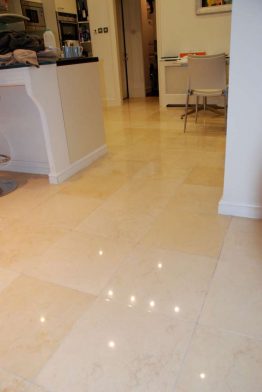
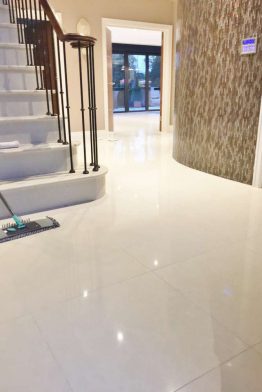
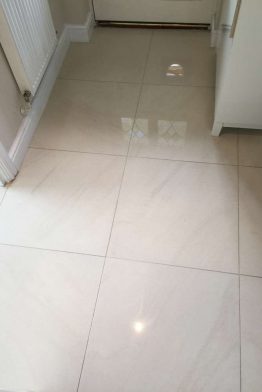
For the full range of stone floor cleaning in London, please contact us here at Silver Lining Floor Care by telephone on 0203 835 2294, or via email at .
Frequently Asked Questions
- What kind of mop to use on stone flooring?
- For stone flooring, the best option is to use a microfiber damp mop. It is able to pick up dirt and debris while maintaining its hygienic qualities with machine washing rather than squeezing.
- What is the best thing to clean stone with?
- For best results when cleaning stone surfaces, use a neutral cleaner, stone soap, or mild liquid dishwashing detergent and warm water. Avoid using an excessive amount of cleaner as it may leave a film and cause streaks.
- How do you restore stone floors?
- Restoring a stone floor typically involves grinding down any uneven surfaces, followed by honing and polishing with an abrasive powder mixed with water to bring out its original shine, lustre, and colour.
- Can you use a steam mop on the stone floor?
- Using a steam mop on a stone floor is not recommended, as it can weaken the surface and lead to visible damage.
- What type of sealant should I use for my stone floors?
- For your stone floor, choose a sealant specifically designed for the particular porosity and finish of the surface.
Limestone Cleaning in Tooting
Limestone, Stone Restoration
Limestone Cleaning in Regents Street Job
Commercial, Limestone, Stone Restoration
Limestone Floor Cleaning in Kensal Geen, London
Limestone, Stone Restoration


